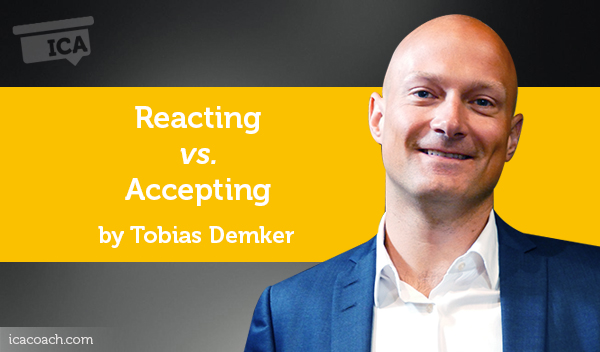
A Coaching Power Tool Created by Tobias Demker
(Leadership coach, CHINA)
 Have you ever been in a position where you are forced to do something that you are not really interested in doing? It might be cleaning up your room as a child, or taking on an additional task you are not interested in at work, as an adult? How do your react and behave in these situations?
Have you ever been in a position where you are forced to do something that you are not really interested in doing? It might be cleaning up your room as a child, or taking on an additional task you are not interested in at work, as an adult? How do your react and behave in these situations?
Many times when we face difficulties, we spend a lot of energy trying to reject a change, a proposal, an idea, or maybe even our own thoughts. We might view something as negative or bad, and maybe even start looking for arguments to cement our position. If we look at the “ladder of inference”, this model certainly highlights this case, that we create our own reality and base our actions accordingly.
The reactive zone
It seems like it is common for us as humans to spend a lot of time in the “reactive zone”, where we see ourselves as victims in the given situation. In these situations we typically show behaviors of blaming, defending, protecting, denying, etc. This is a natural state, and it is often the first place we go to when we are under pressure, or feel stressed. A lot of research is showing that we are still highly affected by our reptile brain when we come under stress. There are basically 3 survival instincts telling us to either fight, flight, or freeze.
By cementing ourselves in this state, it becomes very difficult to reach a more constructive state by our own means. It is also highly likely that will have a negative influence on our surrounding.
Signs of reacting
The “reacting language” includes a lot of words like: they, them, you etc. This kind of language might be an indicator that the person is putting blame on others for the situation, and withdrawing his/her own accountability.
The focus of the conversation might also be focusing much more on the past than the current reality, or desired situation. There might be a need for the person to release some frustration by complaining about the past. However there is nothing constructive getting stuck in this state.
Accepting
The first step of moving into a more constructive state might simply be to accept the situation for what it is. Here we can explore what we might be able to do in the situation, and maybe even explore if there are any opportunities? There is of course a difference between saying that you accept the situation, and truly accepting the situation in your heart. It might take a lot of self-awareness to realize this, and this is also an interesting area to explore for us as coaches. It might take a lot of openness and reflection to move into a state of acceptance, simply because it is hard to accept that we are not accepting in the first place.
Accepting thus means to truly see and understand the current reality for what it is. I believe that no one really wants to be in a reactive mode, and therefore it is very difficult to accept that we might be in such a state. By accepting the situation as it is, can therefore be a great relief. It might even be quite emotional.
The Leadership Circle, and the creative zone
I have done some work with “The leadership circle”, which I find to be a great tool to support coaching. When using this tool we can see that the “circle” is divided into a “reactive” half, and a “creative” half. Here we can clearly distinguish between more or less constructive behaviors. By using the perspective of Reacting vs Accepting, we are not yet having a discussion of what could happen if we were in the creative zone. My suggestion with this tool is to simply start exploring what it would be like to be truly accepting the situation, before exploring other alternatives.
Coaching application
Questions to ask to move from Rejecting to Accepting, might include: